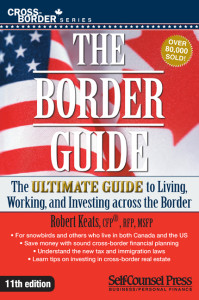How To Move To Canada From The US?
It is estimated by the US embassy in Ottawa that there are more than a million Americans living in Canada on a regular basis. Canada welcomes thousands of new immigrants and visitors from the US every year. Just as Canadian visitors fall in love with certain areas of the US and purchase property there, for similar reasons Americans visiting Canada often want to either purchase Canadian property for recreational use or as an investment.
How can you immigrate to Canada?
Canada, like the United States, has many business and family categories by which people can apply for immigration. The key categories used by Citizenship and Immigration Canada (CIC) are outlined below:
1. Skilled Workers
Skilled workers with good education, work experience, and knowledge of English or French may immigrate to Canada based on the number of points they receive from a scoring formula based on six factors. Total score from the primary six factors must exceed 75 out of 100 before one may be considered for immigration to Canada in this category. The six factors are Education (maximum of 25 points); English and French Language Ability (maximum 24 points); Work Experience (maximum 21 points); Age (maximum 10 points); Arranged Employment (maximum 10 points); and Adaptability (maximum 10 points).
2. Business Immigrants
Canada has implemented a new program for business entrepreneurs to get a visa and permanent residence in Canada. This program is called the Start-up Visa Program, which has four basic requirements for a business entrepreneur.
3. Provincial Nomination
Most Canadian provinces and territories have programs that encourage immigrants to settle in their jurisdictions. These Provincial Nominee Programs (PNPs) are primarily employment-driven, allowing the provinces to select immigrants to assist in the developing specific areas of provincial economies.
4. Family Class Immigration
Canadian citizens and permanent residents living in Canada who are 18 years or older may sponsor close relatives or family members who want to become permanent residents of Canada. Sponsors must promise to support the relative or family member and their accompanying family members for a period of three to ten years, depending on their age and relationship to the sponsor, to help them get established in Canada.
5. Quebec Immigration
Quebec is responsible for selecting immigrants who wish to settle in Quebec. In fact, Quebec has a special status with Citizenship and Immigration Canada that allows it to set its own immigration criteria, almost like a separate country.
6. North American Free Trade Agreement (NAFTA)
Under NAFTA, US businesspeople get quicker and easier temporary entry into Canada than other applicants. NAFTA applies to four specific categories of businesspeople: business visitors, professionals, intracompany transferees and traders or investors. Each of these categories has its own requirements to gain temporary access to Canada to conduct business.
 Once you become a permanent resident of Canada, you may apply for Canadian citizenship (after living in Canada for at least 1,460 days). If you are a US citizen, the United States does not require that you give up your US citizenship to become a Canadian citizen. Therefore, in effect, when you become a Canadian citizen, you are considered a dual citizen of Canada and the United States.
Once you become a permanent resident of Canada, you may apply for Canadian citizenship (after living in Canada for at least 1,460 days). If you are a US citizen, the United States does not require that you give up your US citizenship to become a Canadian citizen. Therefore, in effect, when you become a Canadian citizen, you are considered a dual citizen of Canada and the United States.
More detailed information on how to move to Canada and make the best out of travelling across the border can be found in the Border Guide by Robert Keats (11th edition), which will be available in April 2016 from Self-Counsel Press. The 10th edition of the Border Guide is currently on sale ($9.95 only!).





